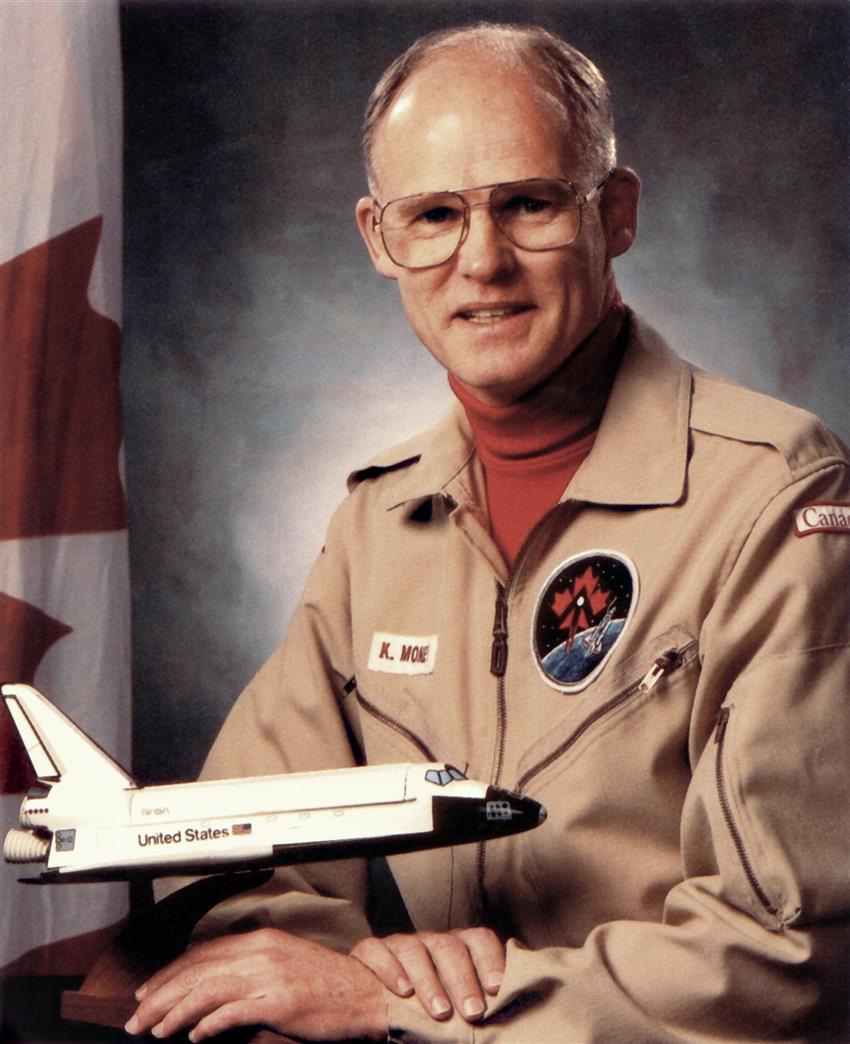Biography of Ken Money
- –
- Born: Toronto, Ontario, Canada
- Background: Physiology professor, lecturer, scientist, Olympian
- Education: Bachelor of science in physiology and chemistry, master of science in physiology, Ph.D. in physiology
- Languages: English
- Mission: None
Career highlights
-
Ken Money joins the Royal Canadian Air Force. On two occasions, he pilots successful search and rescue missions in Canada's northern wilderness using float-equipped Otter aircraft.
-
As an accomplished athlete, he represents Canada in the Summer Olympics in Melbourne, Australia, where he places in the top five of the men's high-jump competition.
-
Ken Money embarks on a career with the Defence and Civil Institute of Environmental Medicine, now known as Defence Research and Development Canada, in Toronto, Ontario. He develops expertise on motion sickness in human spaceflight while also closely studying spatial disorientation in pilot flight.
-
He first works with the NASA space program and acts as a scientific advisor. Over the years, he acts as a co-investigator on a range of experiments on six Space Shuttle missions.
-
Ken Money graduates from the National Defence College.
-
He is selected as a member of the first team of Canadian astronauts in December.
-
Money begins his astronaut training in and launches Canada's initial medical experiments performed in space when the first Canadian astronaut flew aboard Mission STS-41G in October.
-
Money graduates from the Accelerated Free Fall Skydiving course at the Spaceland Parachute Center in Houston.
-
He is designated alternate payload specialist for the first International Microgravity Laboratory mission, which takes place in aboard Space Shuttle Discovery flight STS-42. He coordinates communications between the flight crew and the ground support team from NASA's Marshall Space Flight Center in Huntsville, Alabama. He also helps formulate numerous space physiology experiments for the mission.
-
Ken Money leaves the Canadian Space Agency and returns to studying and practising physiology.
He works as an associate professor of physiology at the University of Toronto. Money also teaches occasionally at York University and gives talks at universities in Canada, the United States, Great Britain, France, Italy and Japan.
For six years, he works as a corporate director on the board of Interquest Incorporated, a Toronto company that finances technology start-up companies.
For three years, he works on the board of directors and on the science advisory board of Lifetech Corporation, a Toronto-area biotech firm.
-
Ken Money retires as senior scientist at Defence Research and Development Canada.
-
He serves as editor and co-author of a report examining the potential psychological and physiological aspects of astronauts involved in long-duration spaceflight missions.
Education
Ken Money received a Bachelor of Science in Physiology and Chemistry from the University of Toronto () and a Master of Science () and Ph.D. () in Physiology from the same university.
Special honours
Rupert Turnbull lecturer, Canadian Aeronautics and Space Institute (); Academician of the International Academy of Astronautics (); fellowship in the U.S. Aerospace Medical Association (). Recipient of the Wilbur R. Franks Award () from the Canadian Society of Aviation Medicine; Grass Foundation Neurosciences Lectureship () from Penn State University; Wellmark Lecturer for the Canadian Association for Clinical Microbiology and Infectious Diseases (); inducted into the University of Toronto's Hall of Fame (); Meritorious Service Cross by the Governor General of Canada () for his many contributions to science and technology; he was presented with the Kent Gillingham Award by the U.S. Aerospace Medical Association () for his contributions to knowledge of disorientation and situational awareness in flight.

